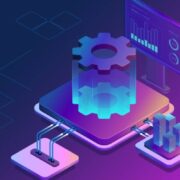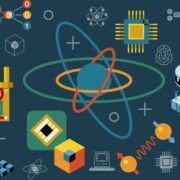10+ Reasons Why Technology is Good for Education
From the time before time, man has been trying to find ways to make our learning process more fun and stimulating. Some people think that technology can’t help our children’s education, but that is a very naïve perspective. Why? Read on to find out 10 reasons why technology is good for education!
10+ Reasons Technology Is Making School Easier:
It is deeply integrated into education and is being used for all kinds of purposes.
The present generation has been a witness to the evolution of technology. The rate at which it has evolved is incredible. Our lives have become easy and fast because of technological advancement.
But what does this mean for education? How has it affected students’ lives? Let us take a look at its positive effects of it on education. Here are the 14 reasons why technology is good for education.
It Has Made Research Easier:
Gone are the days when you had to dig through books, magazines, and newspapers in order to find information related to your topic. Now, all you need is a device that connects to the internet. You can use Google, Yahoo, or any other search engine to do your research within seconds. If someone needs an urgent essay writing service then it takes less than an hour to find information on any topic with the help of technology. You can also get access to different books available online which can make learning easier and fun.
It Helps Students Engage with Material:
It is a great way to get students excited about learning. It happens with exciting new technologies like 3D printers and virtual reality on the horizon. Now it makes sense that kids today are more interested than ever before in learning how to code or create apps.
We know getting students excited about learning can be difficult for educators. But technology can help bring new life to lessons on even the most mundane topics. Students can use computers to research historical figures or current events from all over the world. They can write essays using word processing programs designed to correct spelling errors and grammar mistakes. They can even take virtual field trips to museums and historical landmarks via Google Street View.
Technology Inspires Creativity:
Many students are often intimidated by traditional essays and papers. They may find them overwhelming or boring. However, when given the opportunity to use technology such as computers, tablets, smartphones, or interactive whiteboards, many students become much more interested in the content being presented.
There are hundreds of apps for tablets that encourage creativity and imagination in young learners. Apps like these allow children to express themselves through virtual drawings, animation, and music. Side by side they are learning concepts such as math and language arts, etc.
Empowerment for Children with Disabilities:
Assistive technology can enable those with physical and learning disabilities to read and write. Moreover, independently complete tasks that were previously impossible or difficult.
The range of assistive technologies is vast and continually growing. It includes everything from talking calculators for students with dyscalculia to screen readers for students who are blind. These tools provide students equal access to information and resources that were previously out of reach.
Students Can Learn from Anywhere:
Students no longer have to worry about reaching school on time or rushing home after school hours. They can study from wherever they are as long as they have their laptops, tablets, or smartphones with them. This allows students who cannot commute regularly to attend good schools. They will be able to pursue their education without having to travel long distances for it.
Technology Brings New Teaching Methods:
Teachers are now able to use new teaching methods with the help of it. Now, students can learn or grasp any subject or information in a very short time. This workshop will help teachers to use it in their classes and would encourage them to find new ways to teach their students.
Helps In Learning More Effectively:
It helps students and teachers in learning more effectively. They can now use materials like videos, podcasts, presentations, etc. This makes learning more interesting. The best example of this is the flipped classroom where lectures are given outside the classroom. This happens by using teaching videos, and homework is done inside a class using discussion techniques.
Technology Makes Teaching Easier:
It has made teaching easier for teachers as they don’t have to write on blackboards continuously because everything can be displayed on a projector screen using PowerPoint Presentations.
Teachers Can Use social media More Effectively:
Teachers can use social media more effectively in their classrooms to engage students. It is possible by putting quizzes or surveys on Facebook or any other platform which students like to use regularly. Students also love this idea and it encourages them to study hard.
Access to Information:
One of the major benefits of it in education is that it provides instant access to vast stores of information in all subject areas. Students have the ability to learn at their own pace while they interact with the world outside the classroom. Technology makes research easier, as it allows access to valuable information instantly via the Internet and other digital sources.
Personalized Learning:
Students have different ways of learning, which can be attributed to individual differences in cognition and brain functioning. Technologies such as virtual reality augmented reality and 3D printing help foster personalized instruction by allowing teachers to customize educational practices for individual students’ needs. So, that they can learn at a faster pace and improve their performance more effectively.
These technologies can also create better learning experiences for students who face physical challenges, such as blindness or deafness by providing them with sensory inputs, such as voice-overs or Braille devices that help them to understand better what they are learning.
Independent Learning:
Computer programs and online education allow students to learn independently with less reliance on teachers. It makes to research the topics they’re studying. Moreover, makes it easier to complete assignments that involve researching topics online. They also help students prepare for tests by providing them with resources like flashcards and practice tests.
Communication Among Students, Teachers, and Parents:
Computers and cell phones allow students, teachers, and parents to communicate more easily with each other. Students can email teachers with questions. Teachers can text parents if a student is absent. While parents can email assignments to teachers if their student has been absent from school. This helps keep everyone informed on what’s going on in their student’s education.
Increased Productivity:
When teachers use technology, they spend less time on things. For instance, taking attendance, grading papers, and emailing each other. This frees up more time for teachers to teach. Educators are able to make dynamic lesson plans that work for students. These plans are with different learning styles. It is to give them more chances for personalized instruction. Because teachers can work one-on-one more often, their students do better in school.
Conclusion:
Technology helps develop 21st-century skills. These are skills like collaboration, communication, and problem-solving. Most of the jobs available in 10 years haven’t been invented yet. The best way to prepare for a future that we can’t predict is to help students become flexible and creative thinkers who are able to communicate and collaborate.















Comments